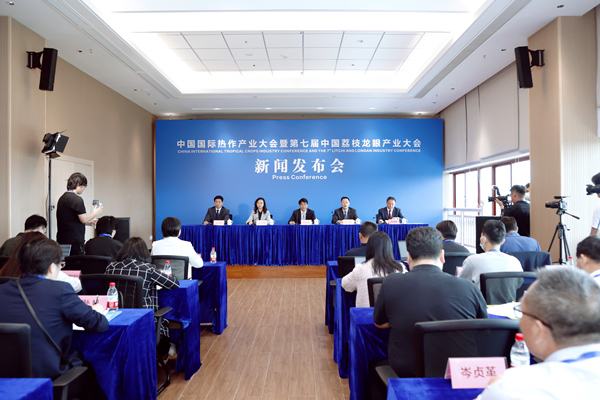Maoming lychee, longan industry conference to boost rural vitalization
- (guangdong.chinadaily.com.cn/maoming)
- Updated: 2023-04-28
A press conference for the China International Tropical Corps Industry and the 7th Lychee and Longan Industry Conference was held at the China Lychee Expo Center in Maoming on April 27.

The press conference takes place at the China Lychee Expo Center on April 27. [Photo/WeChat account: maofabu]
The conference, titled "Good development of tropical crops makes a better world", will be organized by the Ministry of Agriculture and Rural Affairs, People's Government of Guangdong Province, China Reclamation Economic Development Center, Department of Agriculture and Rural Affairs of Guangdong Province, and the Maoming municipal people's government.
It aims to promote the high-quality development of the tropical crops industry, promote rural vitalization in areas where these are grown, and enhance the high-level opening-up of agricultural exports to various destinations around the world.
China is a major producer of popular crops and a major trade and consumption country. The total area in which tropical crops are cultivated in the country is about 70 million mu (5 million hectares), resulting in annual output of about 36 million metric tons. As such, the annual output value is now in excess of 200 billion yuan ($29 billion) while the import and export volume has surpassed 210 billion yuan.
Maoming is the world's largest production base for lychees, with one in five on the global market coming from the city. Maoming also boasts the province's biggest longan production base, accounting for half of the province's total output. The city has hosted three sessions of the Lychee and Longan Industry Conference to date.
This year, the national production area for lychees stands at 7.9 million mu, with total output forecast to hit 3.29 million tons, up 31.07 percent year-on-year. Meanwhile, the total production area for longans nationwide in 2023 is 4.63 million mu, with projected output set to reach 1.98 metric tons, which would represent a year-on-year rise of 40 percent.


